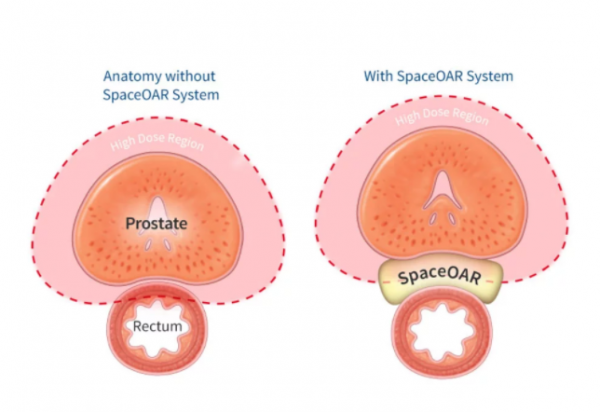What we treat
We work closely with your existing medical team to determine whether CyberKnife® treatment is right for you.


What CyberKnife® treats
Patient eligibility for CyberKnife is determined following a thorough consultation with one of our highly experienced Radiation Oncologists.
Our 5D Clinics specialists work closely with your existing medical team to determine whether CyberKnife treatment is right for you in the following areas: Brain Cancer, Lung Cancer, Prostate Cancer, Liver Cancer, Kidney Cancer, Pancreatic Cancer and Metastatic Disease (Oligometastatic Disease).


Areas of Treatment
The CyberKnife® system has been widely used around the world for the treatment of brain cancer and has been proven as a safe and effective treatment for a range of malignant and benign brain conditions. CyberKnife® can be used to treat complicated neurosurgical cases, while sparing healthy brain tissues involved in important functions such as motor control, sensation, hearing and vision.
The treatment options for brain cancer are largely determined by the type, size and location of the tumour. Current treatments include chemotherapy, surgery or radiotherapy to remove or destroy cancer cells.
CyberKnife® uses a proprietary 6D skull tracking algorithm and frequent x-ray imaging to ensure the exact location of the target is well defined. By taking x-ray images throughout a patient treatment, the CyberKnife® system is constantly correcting for any patient movement. When sub-millimetres matter, even slight patient movements or shifts in the position of the tumor can be significant. The CyberKnife® System automatically synchronizes the radiation beam with skull movement in real-time throughout treatment.
The non-invasive nature of CyberKnife® treatment delivery makes it an attractive treatment option for many. Unlike other radiosurgery techniques which require a rigid immobilisation frame be physically attached to a patient’s skull, CyberKnife® utilises a non-invasive thermoplastic mask for stability of the head and improved comfort for the patient.
Brain treatments with CyberKnife® are typically delivered over 1 – 3 treatment sessions, with the ability to treat single or multiple brain lesions in one treatment session. Most patients experience minimal side effects and can return to their normal activities immediately following treatment.
One of the biggest challenges in lung cancer treatment remains effectively treating the cancer, while minimizing impact on the many sensitive tissues and vital organs that surround the lungs. Precision is critical — and that’s what makes the CyberKnife® System so unique.
When you breathe, your torso moves. This means that a lung tumour will continuously move throughout the course of treatment delivery. Unlike any other radiation therapy device, the CyberKnife® System uses the world’s only real-time motion synchronization technology to continuously track that motion and adapt treatment delivery to maintain sub-millimetre precision.
This helps to ensure the radiation dose is delivered to the target — maximizing treatment effectiveness while minimizing dose to surrounding tissues to help reduce the incidence of side effects. And unlike other radiotherapy options, the CyberKnife® System does not require uncomfortable patient restraints or breath-hold techniques.
Standard radiation delivery systems do not have this tracking ability and therefore irradiate larger areas of healthy lung tissue. As a consequence, standard treatments are typically delivered in 30 or more low-dose treatment sessions over the course of 5 weeks, as opposed the CyberKnife® System’s ability to treat effectively and precisely in just 1 to 5 treatment sessions.
The pancreas has many important functions in the body and is surrounded by sensitive tissue, such as the stomach and bowel. This type of cancer is often detected late, spreads quickly and has a poor prognosis. That is why when treating pancreatic cancer it is important to deliver an effective dose whilst avoiding damaging normal and surrounding tissues as much as possible. In contrast to conventional techniques for pancreatic cancer, stereotactic radiation treatment using the CyberKnife® System can deliver high doses of radiation with sub-millitmetre accuracy.
Common treatments for pancreatic cancer include surgically removing the pancreas, radiation and chemotherapy. Historically conventional radiation was given after surgery or in combination with chemotherapy in small doses over several weeks because effective doses have not been able to be delivered precisely enough to avoid injuring nearby healthy tissues. And because the pancreas moves inside the abdomen during breathing, conventional radiation treatments for pancreatic cancer have required patients to hold their breath or be fitted into a specifically designed body frame to decrease patient movement and decrease surrounding tissue damage.
To enhance precision, a gold seed (known as a fiducial marker) is first placed inside or adjacent to the tumour, providing a target on which the CyberKnife® robot can lock. During treatment, a synchrony tracking algorithm creates predictive positional adjustments of the robot head in real time to allow for movement of the pancreas during breathing. This technique enables the patient to lie comfortably and naturally on the treatment couch without the need for unnecessary immobilisation devices or body frames.
By tracking the tumour in real time using a combination of optical markers, LED cameras and real-time X-rays, the CyberKnife® System can deliver very high doses of radiation to the target, sparing adjacent organs and tissue. This improves treatment outcomes whilst minimising side effects and decreases treatment time from several weeks to a few days.
The liver has many important functions in the body. That’s why when treating liver cancer, it’s important to avoid damaging normal liver tissue as much as possible. In contrast to conventional techniques for liver cancer, stereotactic radiation treatment using the CyberKnife® System is able to deliver extremely high doses of radiation with sub-millimetre accuracy.
Common treatments for liver lesions include tumour ablation (Radiofrequency or Radiation), chemotherapy and surgery. Although liver cells are particularly sensitive to radiation, radiotherapy has historically not been commonly used because effective doses have not been able to be delivered precisely enough to avoid injuring nearby healthy tissues. And because the liver moves inside the abdomen during breathing, conventional radiation treatments for liver cancer have required patients to hold their breath or be fitted into a specifically designed body frame to decrease patient movement and decrease surrounding tissue damage.
To enhance precision, a gold seed (known as a fiducial marker) is first placed inside or adjacent to the tumour, providing a target on which the CyberKnife® robot can lock. During treatment, a synchrony tracking algorithm creates predictive positional adjustments of the robot head in real time to allow for movement of the liver during breathing. This technique enables the patient to lie comfortably and naturally on the treatment couch without the need for unnecessary immobilisation devices or body frames.
By tracking the tumour in real time using a combination of optical markers, LED cameras and real-time X-rays, the CyberKnife® System can deliver very high doses of radiation to the target, sparing adjacent organs and tissue. This improves treatment outcomes whilst minimising side effects and decreases treatment time from several weeks to a few days.
Treatment methods depend on the type of kidney cancer, its location and spread of the disease. Surgery is the most accepted treatment for early-stage kidney cancer. However, depending on the fitness of the patient and size of tumour, Radiofrequency Ablation (RFA) or Stereotactic Ablative Body Radiotherapy (SABR) may be recommended.
Conventional radiation treatments typically require delivery of low doses during many sessions over several weeks and require the use of compression or breath hold techniques to achieve better accuracy. In contrast, stereotactic radiation treatment using the CyberKnife® System can deliver extremely high doses of radiation with sub-millimetre accuracy.
To enhance precision, a gold seed (known as a fiducial marker) is first placed inside or adjacent to the tumour, providing a target on which the CyberKnife® robot can lock. During treatment, a synchrony tracking algorithm creates predictive positional adjustments of the robot head in real time to allow for movement of the kidney during breathing. This technique enables the patient to lie comfortably and naturally on the treatment couch without the need for unnecessary immobilisation devices or body frames.
By tracking the tumour in real time using a combination of optical markers, LED cameras and real-time X-rays, the CyberKnife® System can deliver very high doses of radiation to the target, sparing adjacent organs and tissue. This improves treatment outcomes whilst minimising side effects and decreases treatment time from several weeks to a few days.
Patients have more options than ever for successfully treating prostate cancer. Treatment options typically depend on a variety of factors, including the stage and extent of disease, and include one or a combination of surgical, chemotherapy and radiotherapeutic techniques.
Prostate cancer treatment using CyberKnife® is one of the most accurate and precise Stereotactic Ablative Body Radiation (SABR) systems available, delivering high doses of radiation to the prostate whilst minimising radiation of the surrounding organs including the bladder and rectum. The CyberKnife® technology is not new; the system has more than a decade of clinical evidence and has helped thousands of men with prostate cancer.
The CyberKnife® System is a non-invasive, non-surgical, pain-free treatment option for prostate cancer with proven results.
Prior to treatment, several steps are taken to allow maximum dose (and therefore greatest efficacy) and protect surrounding healthy tissue. First, a Urologist implants 4 gold seed markers into the prostate gland, providing targets on which the CyberKnife® robot can lock.
Next, a SpaceOAR gel is inserted between the prostate and rectum to help protect the rectum from radiation and minimise side effects.
Treatment is then typically delivered in 3 to 5 sessions over 1-2 weeks, usually with minimal side effects.

Unfortunately, cancer cells often travel through the body via the blood and lymphatic systems from the site of the original primary tumour to other locations, creating secondary cancers. This is known as metastatic disease and results in the formation of tumours in areas such as the brain, lung, spine, various lymph node chains and bones.
Historically, treatment for metastatic disease throughout the body required the use of systemic palliative care techniques including chemotherapy drugs, pain medication and palliative radiation therapy. Unfortunately, each of these methods results in significant side-effects.
However, whilst conventional systemic palliative radiation therapy techniques produce significant toxicities to treat secondary tumours, the sub-millimetre accuracy with which the CyberKnife® Systems is able to deliver stereotactic radiation therapy means metastatic disease can be targeted whilst sparing healthy surrounding tissues and organs. And because of its robotic precision, the CyberKnife® System allows high doses of radiation to be delivered in a low number of treatments, maximising treatment efficacy whilst producing minimal side effects.
Metastatic disease to the spine is commonly treated by Radiotherapy. Conventional radiotherapy treatments for the spine often treat the whole vertebral body including critical structures such as the spinal cord. In contrast, the CyberKnife® System can deliver extremely high doses of radiation in a sculpted dose to the vertebral body or target, sparing adjacent healthy tissue, including the spinal cord.